Translational Imaging Spectroscopy for Proximal Sensing
Abstract
:1. Introduction
2. Materials and Methods
2.1. Materials
2.2. Methods
2.3. Module 1: Radiometry
2.3.1. Step 1.1: Radiometric Scaling
2.3.2. Step 1.2: Anomaly Detection and Reduction
2.3.3. Step 1.3: Reduction of Radiometric Miscalibration
2.4. Module 2: Geometry
2.4.1. Step 2.1: Coarse Alignment
2.4.2. Step 2.2: Fine Alignment
2.4.3. Step 2.3: Hyperfine Warping
2.5. Module 3: Reflectance Retrieval
2.5.1. Step 3.1: Jump Reduction
2.5.2. Step 3.2: ROI Related Irradiance Retrieval
2.5.3. Step 3.3: Assessment of the Spatial Illumination Function
2.5.4. Step 3.4: Reflectance Retrieval
3. Results and Discussion
- dx pixel shift,
- dy pixel shift,
- rotation angle,
- scale,
- MSSIM a priori and
- MSSIM a posteri.
- Correlation coefficient between NIST library plate spectra and processed plate image spectra of the ROI named as Spectral Deviation Reference Plate ROI.
- Correlation coefficient between NIST library plate spectra and processed plate image spectra of the region growing derived area names as Spectral Deviation Reference Plate region growing.
- Variation of the processed plate image spectra of the region growing derived area named as Spectral Variation Reference Plate.
- Full spectrum correlation coefficients between the sample spectra of ASD and Perkin Elmer (for overview), between ASD and HySPEX, between Perkin Elmer and HySPEX.
- Continuum removed spectrum correlation coefficients between the sample spectra of ASD and Perkin Elmer (for overview), between ASD and HySPEX and between Perkin Elmer and HySPEX.
3.1. Geometry
3.2. Spectrometry
4. Concluding Remarks
Supplementary Materials
Acknowledgments
Author Contributions
Conflicts of Interest
References
- Mielke, C.; Rogass, C.; Boesche, N.; Segl, K.; Altenberger, U. EnGeoMAP 2.0—Automated Hyperspectral Mineral Identification for the German EnMAP Space Mission. Remote Sens. 2016, 8, 127. [Google Scholar] [CrossRef]
- Lausch, A.; Pause, M.; Merbach, I.; Zacharias, S.; Doktor, D.; Volk, M.; Seppelt, R. A new multiscale approach for monitoring vegetation using remote sensing-based indicators in laboratory, field, and landscape. Environ. Monit. Assess. 2013, 185, 1215–1235. [Google Scholar] [CrossRef] [PubMed]
- Schreiner, S.; Buddenbaum, H.; Emmerling, C.; Steffens, M. VNIR/SWIR Laboratory Imaging Spectroscopy for Wall-to-Wall Mapping of Elemental Concentrations in Soil Cores. Photogramm. Fernerkund. Geoinf. 2015, 2015, 423–435. [Google Scholar] [CrossRef]
- Lenhard, K.; Baumgartner, A.; Schwarzmaier, T. Independent Laboratory Characterization of NEO HySpex Imaging Spectrometers VNIR-1600 and SWIR-320m-e. IEEE Trans. Geosci. Remote Sens. 2015, 53, 1828–1841. [Google Scholar] [CrossRef]
- UV-VIS Spectroscopy: Lambda 650/850/950; Hardware Guide; PerkinElmer: Waltham, MA, USA, 2004.
- Loke, T.; Baarstad, I. HySpex Imaging Spectrometer User’s Manual Version 3.0; Norsk Elektro Optikk AS: Skedsmokorset, 2010; p. 67. [Google Scholar]
- Brook, A.; Dor, E.B. Supervised vicarious calibration (SVC) of hyperspectral remote-sensing data. Remote Sens. Environ. 2011, 115, 1543–1555. [Google Scholar] [CrossRef]
- Biggar, S.F.; Thome, K.J.; Wisniewski, W. Vicarious radiometric calibration of EO-1 sensors by reference to high-reflectance ground targets. IEEE Trans. Geosci. Remote Sens. 2003, 41, 1174–1179. [Google Scholar] [CrossRef]
- Bruegge, C.J.; Diner, D.J.; Kahn, R.A.; Chrien, N.; Helmlinger, M.C.; Gaitley, B.J.; Abdou, W.A. The MISR radiometric calibration process. Remote Sens. Environ. 2007, 107, 2–11. [Google Scholar] [CrossRef]
- Bindschadler, R.; Choi, H. Characterizing and correcting Hyperion detectors using ice-sheet images. IEEE Trans. Geosci. Remote Sens. 2003, 41, 1189–1193. [Google Scholar] [CrossRef]
- Chander, G.; Markham, B.L.; Helder, D.L. Summary of current radiometric calibration coefficients for Landsat MSS, TM, ETM+, and EO-1 ALI sensors. Remote Sens. Environ. 2009, 113, 893–903. [Google Scholar] [CrossRef]
- Barducci, A.; Castagnoli, F.; Guzzi, D.; Marcoionni, P.; Pippi, I.; Poggesi, M. Solar spectral irradiometer for validation of remotely sensed hyperspectral data. Appl. Opt. 2004, 43, 183–195. [Google Scholar] [CrossRef] [PubMed]
- Xiong, X.; Barnes, W. An overview of MODIS radiometric calibration and characterization. Adv. Atmos. Sci. 2006, 23, 69–79. [Google Scholar] [CrossRef]
- Rogass, C.; Spengler, D.; Bochow, M.; Segl, K.; Lausch, A.; Doktor, D.; Roessner, S.; Behling, R.; Wetzel, H.-U.; Kaufmann, H. Reduction of Radiometric Miscalibration—Applications to Pushbroom Sensors. Sensors 2011, 11, 6370–6395. [Google Scholar] [CrossRef] [PubMed]
- Yokoya, N.; Miyamura, N.; Iwasaki, A. Preprocessing of hyperspectral imagery with consideration of smile and keystone properties. SPIE Asia-Pacific Remote Sensing 2010, 7857, 78570B-9. [Google Scholar] [CrossRef]
- Rogass, C.; Mielke, C.; Scheffler, D.; Boesche, N.K.; Lausch, A.; Lubitz, C.; Brell, M.; Spengler, D.; Eisele, A.; Segl, K.; Guanter, L. Reduction of Uncorrelated Striping Noise—Applications for Hyperspectral Pushbroom Acquisitions. Remote Sens. 2014, 6, 11082–11106. [Google Scholar] [CrossRef]
- Brell, M.; Rogass, C.; Segl, K.; Bookhagen, B.; Guanter, L. Improving Sensor Fusion: A Parametric Method for the Geometric Coalignment of Airborne Hyperspectral and Lidar Data. IEEE Trans. Geosci. Remote Sens. 2016, 54, 3460–3474. [Google Scholar] [CrossRef]
- Xie, H.; Hicks, N.; Keller, G.R.; Huang, H.; Kreinovich, V. An IDL/ENVI implementation of the FFT-based algorithm for automatic image registration. Comput. Geosci. 2003, 29, 1045–1055. [Google Scholar] [CrossRef]
- Reddy, B.S.; Chatterji, B. An FFT-based technique for translation, rotation, and scale-invariant image registration. IEEE Trans. Image Process. 1996, 5, 1266–1271. [Google Scholar] [CrossRef] [PubMed]
- Lowe, D.G. Distinctive image features from scale-invariant keypoints. Int. J. Comput. Vis. 2004, 60, 91–110. [Google Scholar] [CrossRef]
- Vedaldi, A.; Fulkerson, B. Vlfeat: An Open and Portable Library of Computer Vision Algorithms. In Proceedings of the 18th ACM International Conference on Multimedia (MM ’10), Firenze, Italy, 25–29 October 2010; Association for Computing Machinery (ACM): New York, NY, USA, 2010; pp. 1469–1472. [Google Scholar]
- Shi, G.; Xu, X.; Dai, Y. SIFT Feature Point Matching Based on Improved RANSAC Algorithm. In Proceedings of the 5th International Conference on Intelligent Human-Machine Systems and Cybernetics (IHMSC), Hanzhou, China, 6–27 August 2013; Volume 1, pp. 474–477. [Google Scholar]
- Rogass, C.; Brell, M.; Segl, K.; Kuester, T.; Kaufmann, H. Automatic reduction of keystone—Applications to EnMAP. In Proceedings of the 8th EARSeL SIG Imaging Spectroscopy Workshop (EARSeL), Nantes, France, 8–10 April 2013. [Google Scholar]
- Rogass, C.; Segl, K.; Kuester, T.; Kaufmann, H. Performance of correlation approaches for the evaluation of spatial distortion reductions. Remote Sens. Lett. 2013, 4, 1214–1223. [Google Scholar] [CrossRef]
- Foroosh, H.; Zerubia, J.B.; Berthod, M. Extension of phase correlation to subpixel registration. IEEE Trans. Image Process. 2002, 11, 188–200. [Google Scholar] [CrossRef] [PubMed]
- Wang, Z.; Bovik, A.C.; Sheikh, H.R.; Simoncelli, E.P. Image quality assessment: From error visibility to structural similarity. IEEE Trans.Image Process. 2004, 13, 600–612. [Google Scholar] [CrossRef] [PubMed]
- Press, W.H.; Teukolsky, S.A.; Vetterling, W.T.; Flannery, B.P. Numerical Recipes in C (2nd Ed.): The Art of Scientific Computing; Cambridge University Press: New York, NY, USA, 1992; ISBN 978-0-521-43108-8. [Google Scholar]
- Guanter, L.; Segl, K.; Sang, B.; Alonso, L.; Kaufmann, H.; Moreno, J. Scene-based spectral calibration assessment of high spectral resolution imaging spectrometers. Opt. Express 2009, 17, 11594–11606. [Google Scholar] [CrossRef] [PubMed]
- Schläpfer, D.; Schaepman, M.; Strobl, P. Impact of spatial resampling methods on the radiometric accuracy of airborne imaging spectrometer data. Presented at the Fifth International Airborne Remote Sensing Conference and Exhibition, San Francisco, CA, USA, 17–20 September 2001; p. 8. [Google Scholar]
- Mancas, M.; Gosselin, B.; Macq, B. Segmentation using a region-growing thresholding. In Proceedings of the Society of Photo-Optical Instrumentation Engineers (SPIE) Conference Series, San Jose, CA, USA, 17–18 January 2005; Volume 5672, pp. 388–398. [Google Scholar]
- Wang, Z.; Bovik, A.C. A universal image quality index. IEEE Signal Process. Lett. 2002, 9, 81–84. [Google Scholar] [CrossRef]
- Barrodale, I.; Skea, D.; Berkley, M.; Kuwahara, R.; Poeckert, R. Warping digital images using thin plate splines. Pattern Recognit. 1993, 26, 375–376. [Google Scholar] [CrossRef]
- Gao, B.-C. An operational method for estimating signal to noise ratios from data acquired with imaging spectrometers. Remote Sens. Environ. 1993, 43, 23–33. [Google Scholar] [CrossRef]
- Brell, M.; Segl, K.; Guanter, L.; Bookhagen, B. Hyperspectral and Lidar Intensity Data Fusion: A Framework for the Rigorous Correction of Illumination, Anisotropic Effects, and Cross Calibration. IEEE Trans. Geosci. Remote Sens. 2017, 55, 2799–2810. [Google Scholar] [CrossRef]
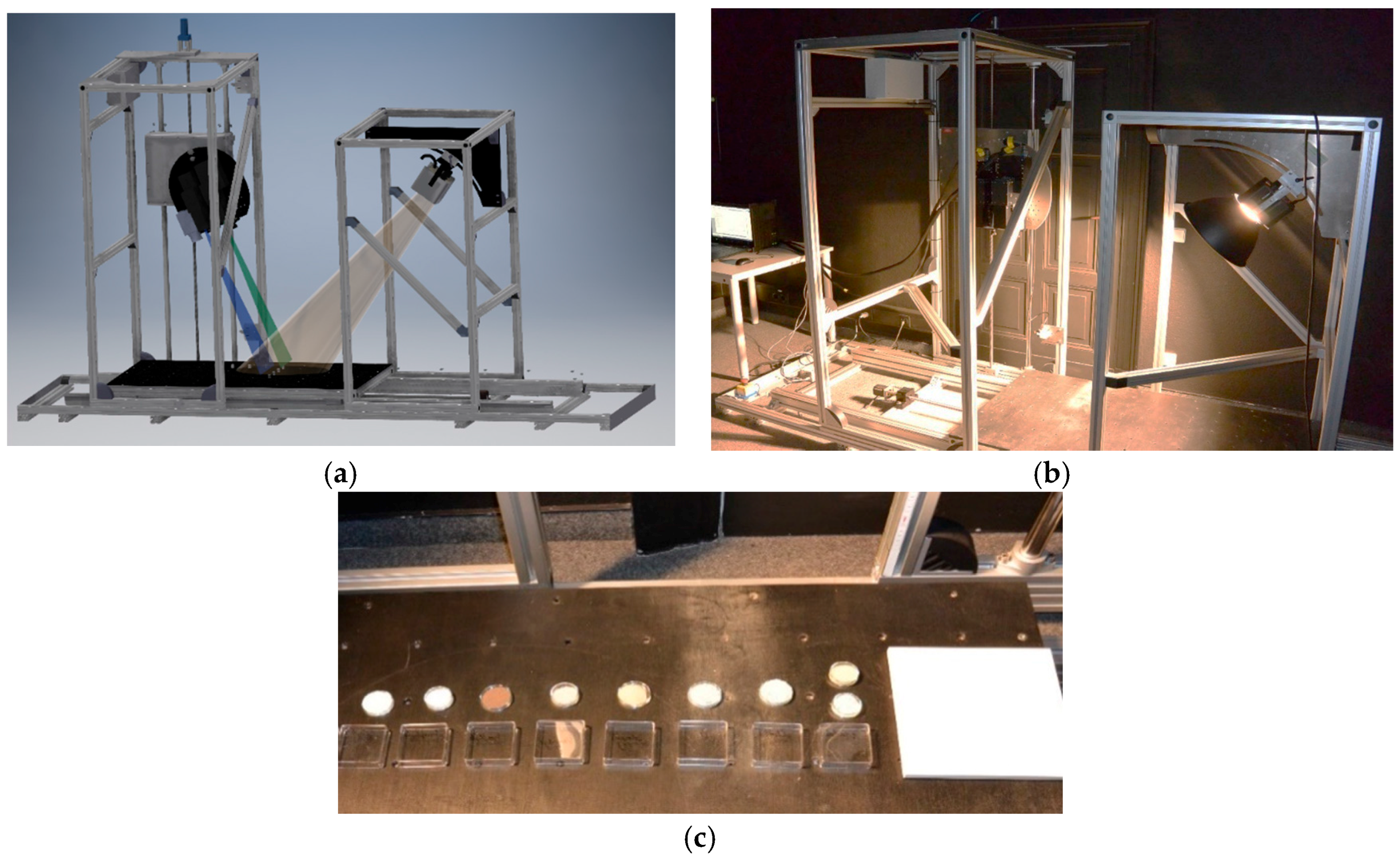
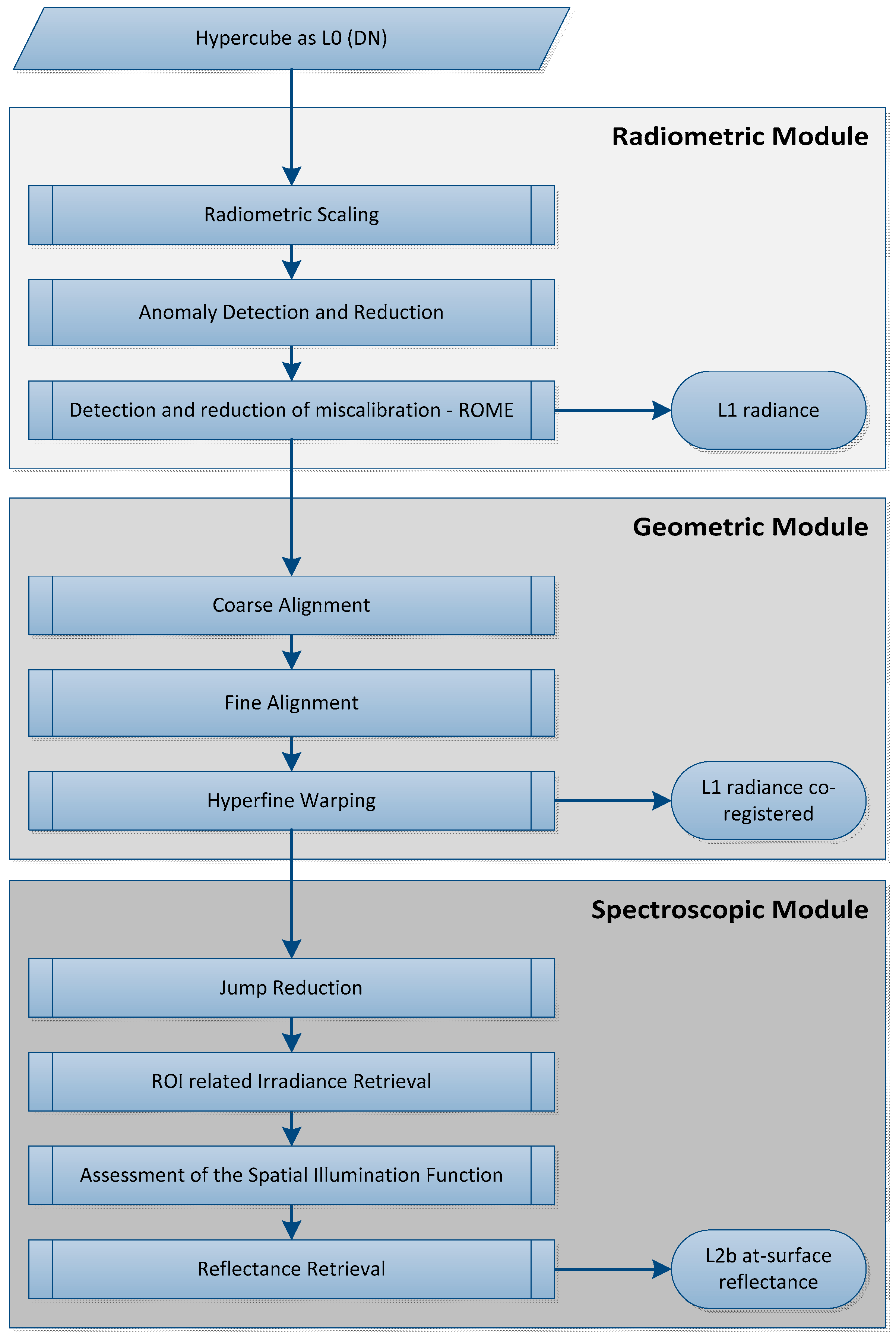


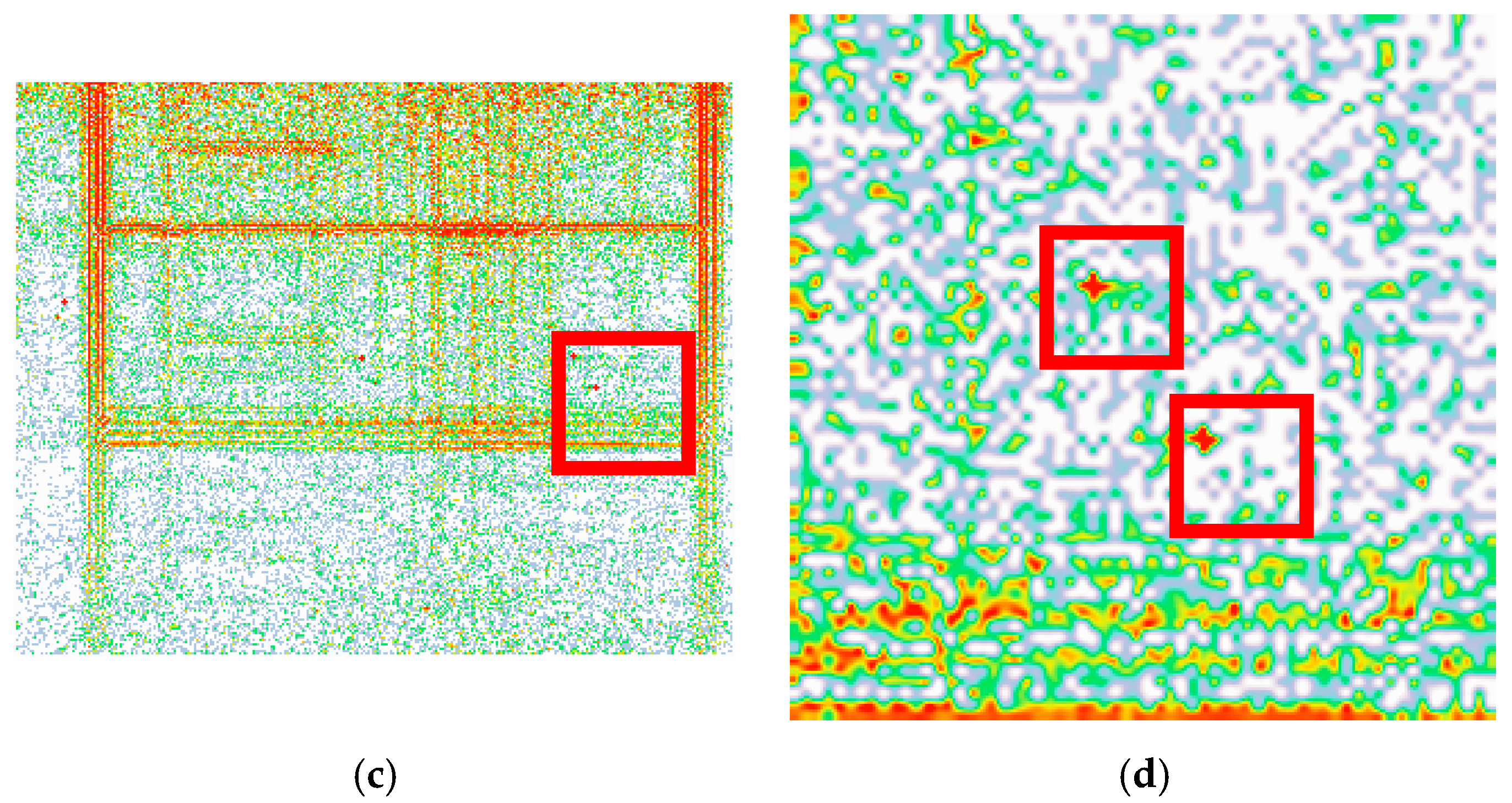
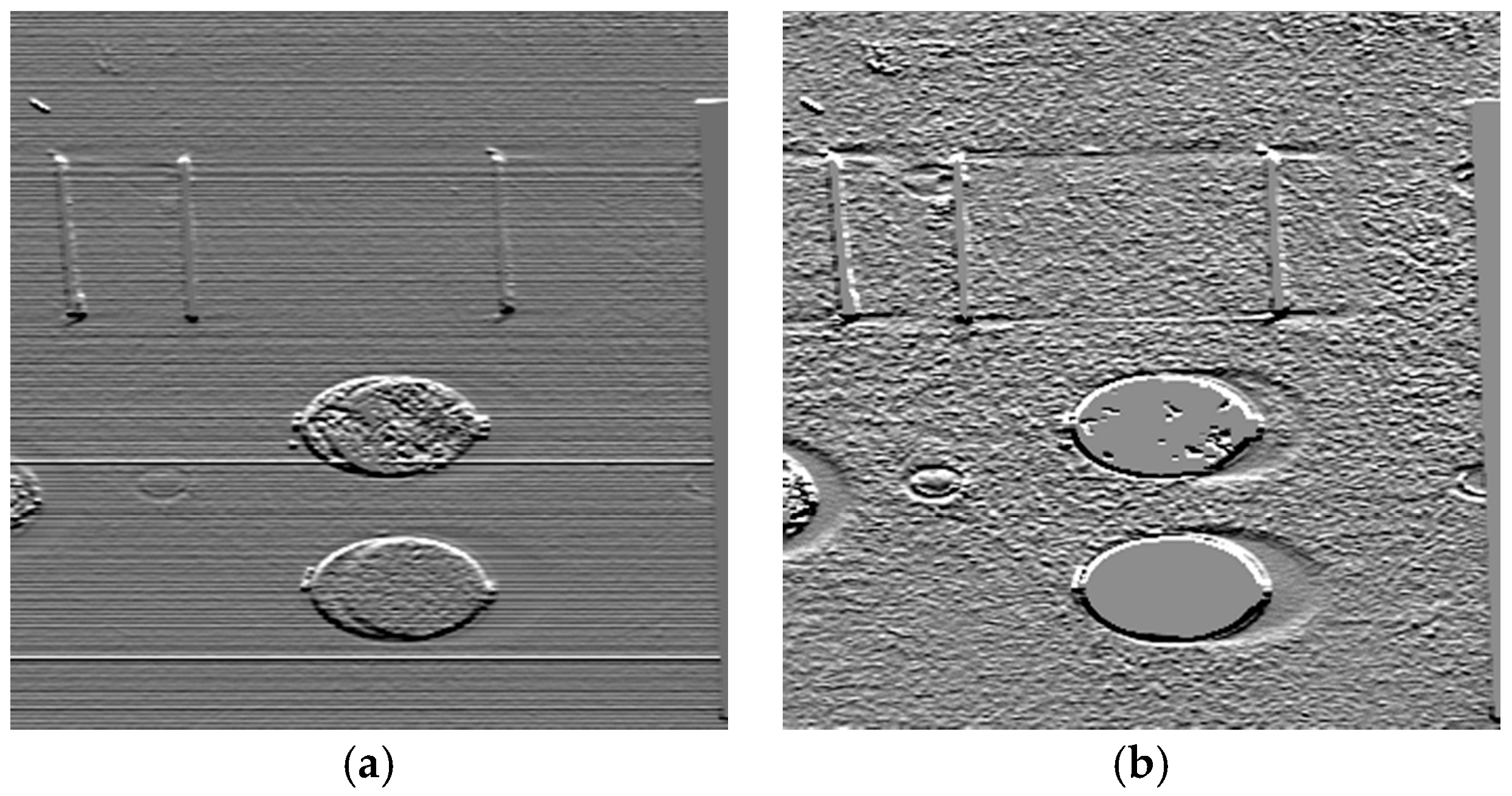
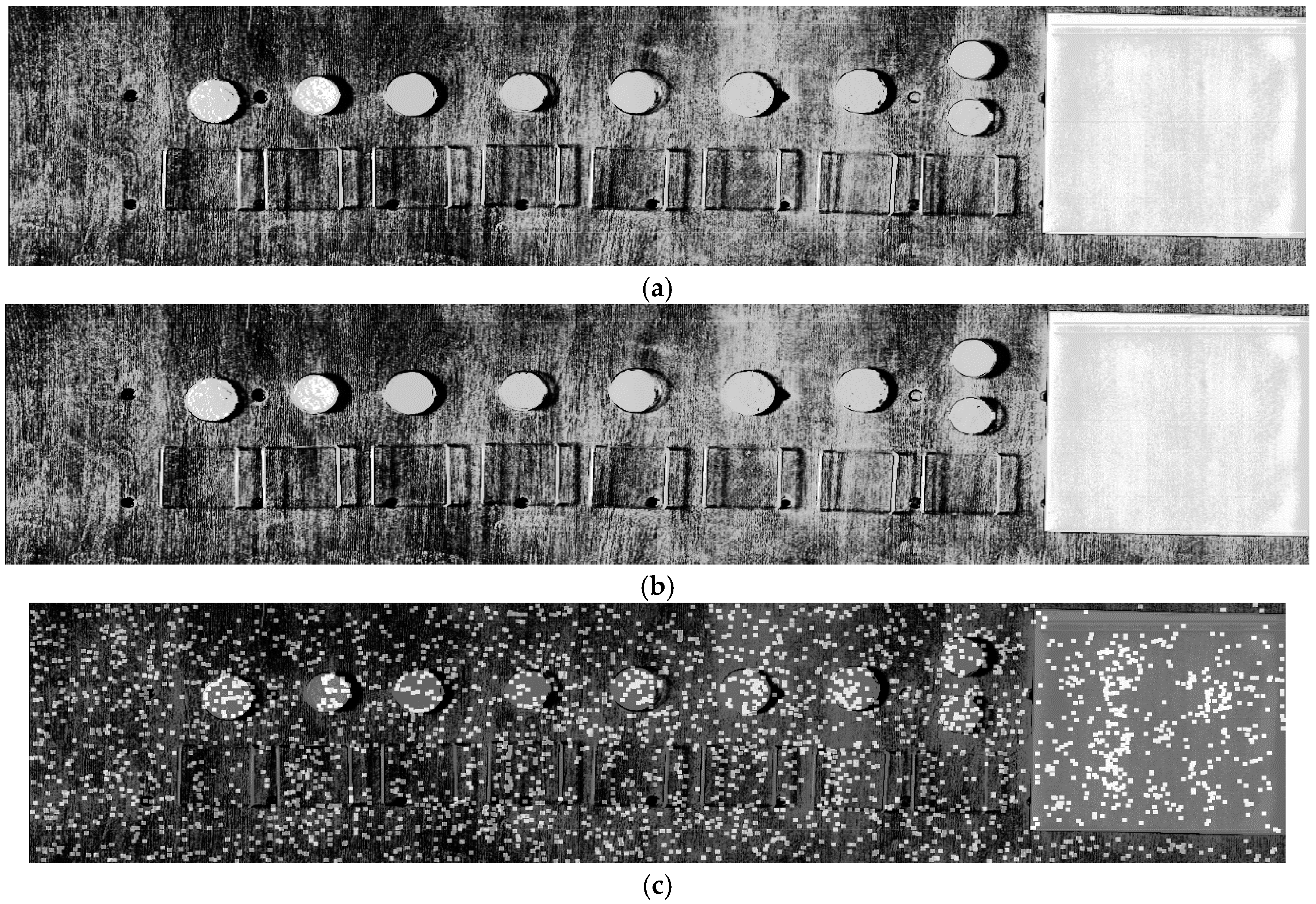
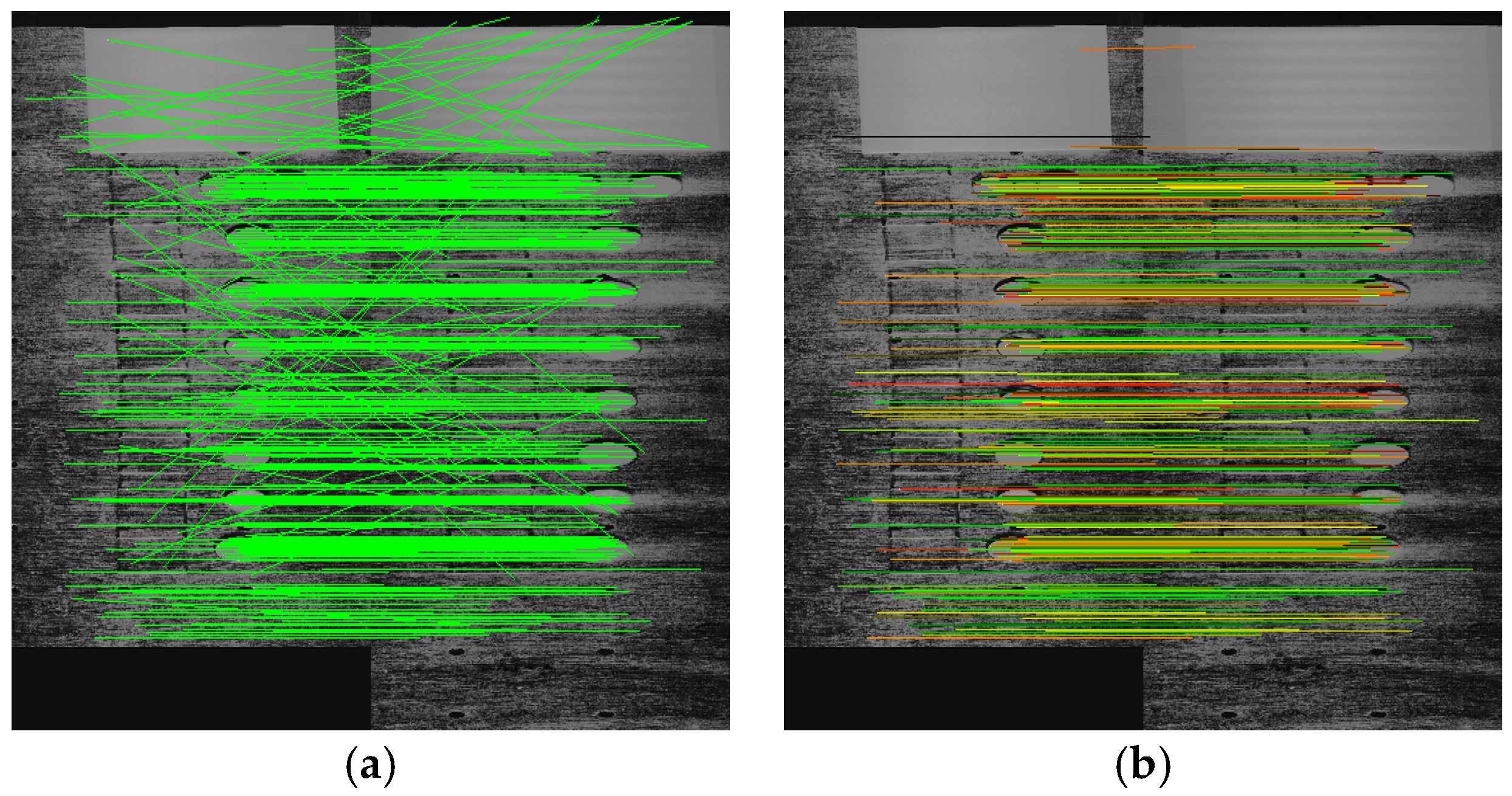
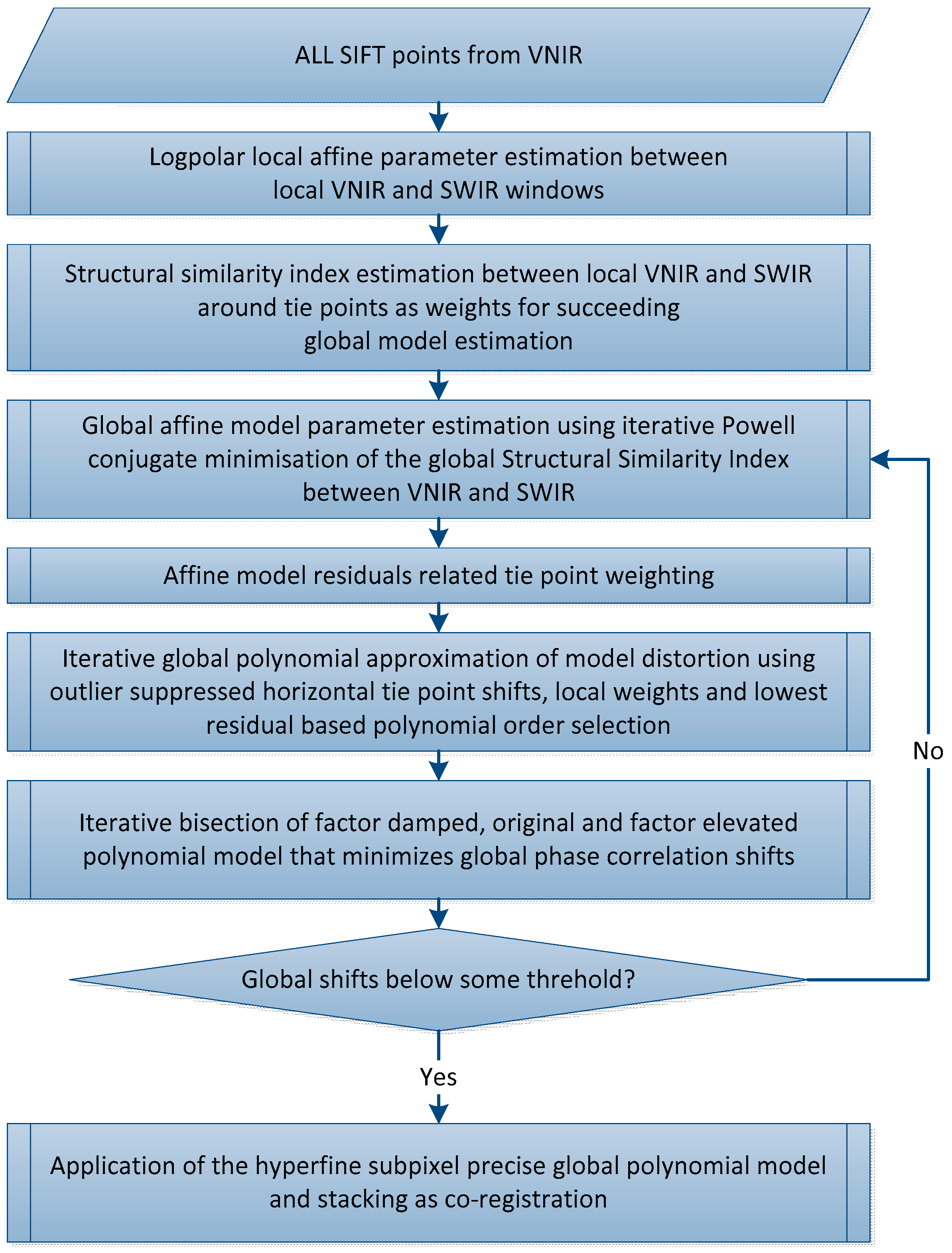
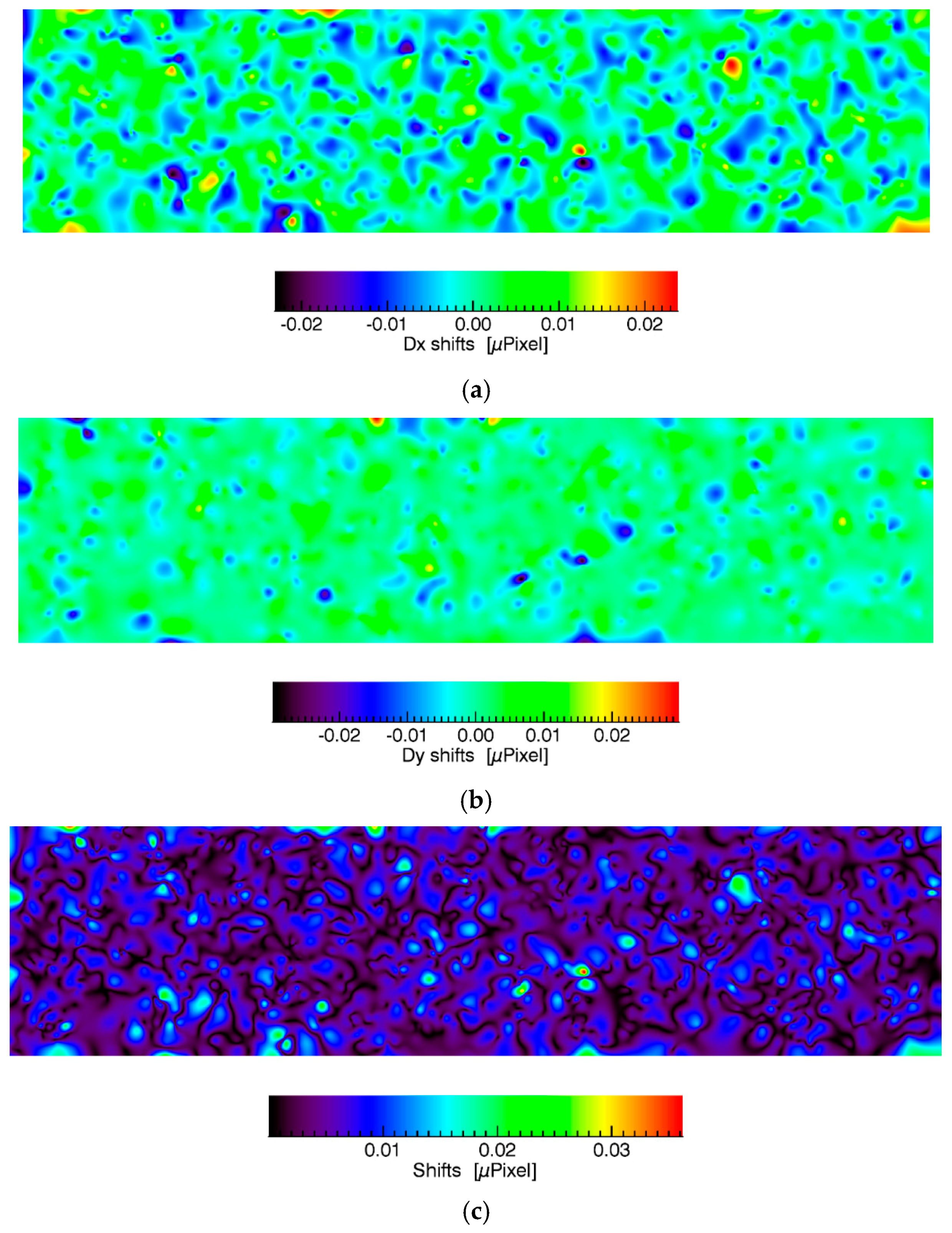
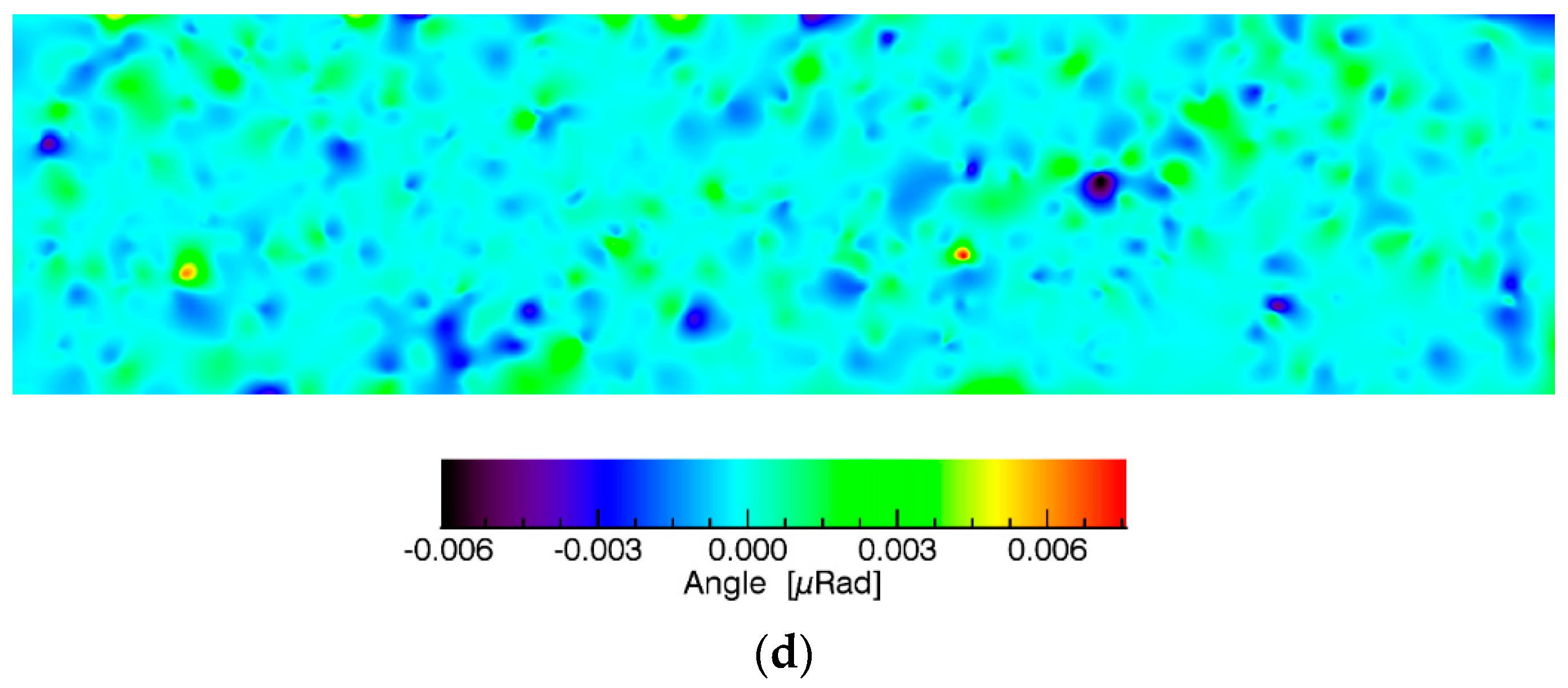
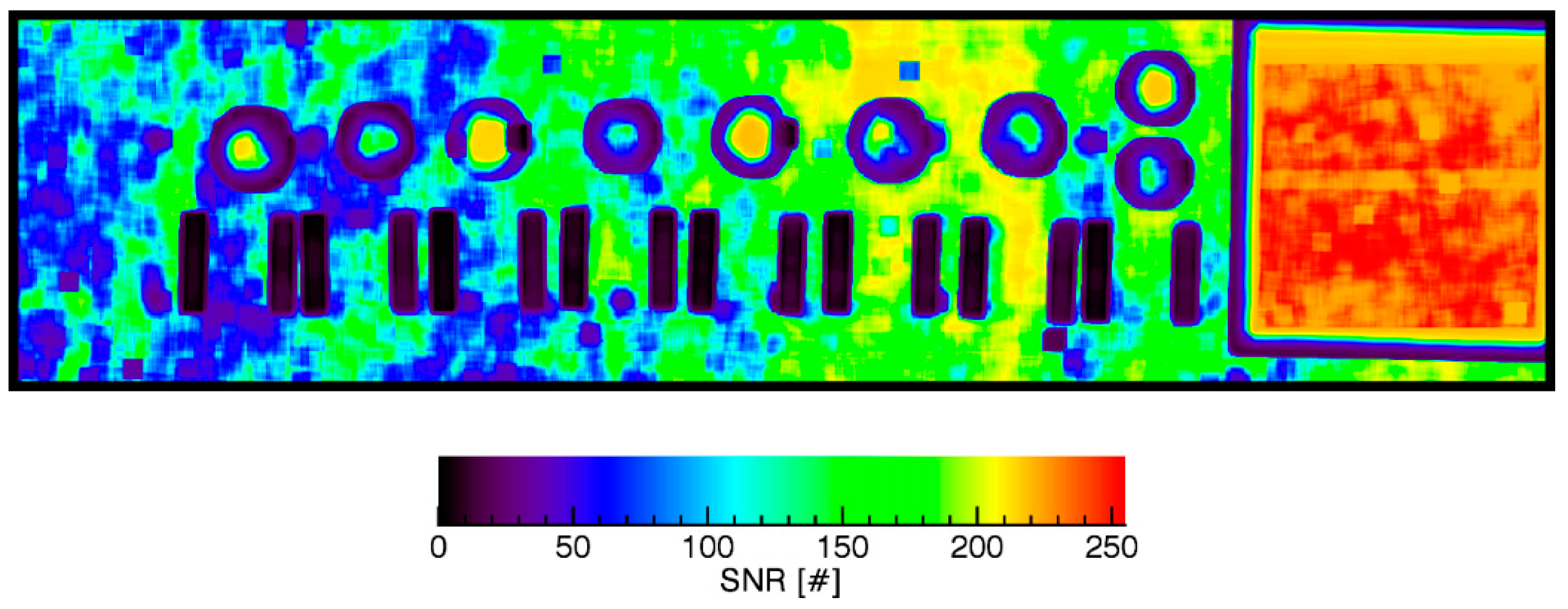
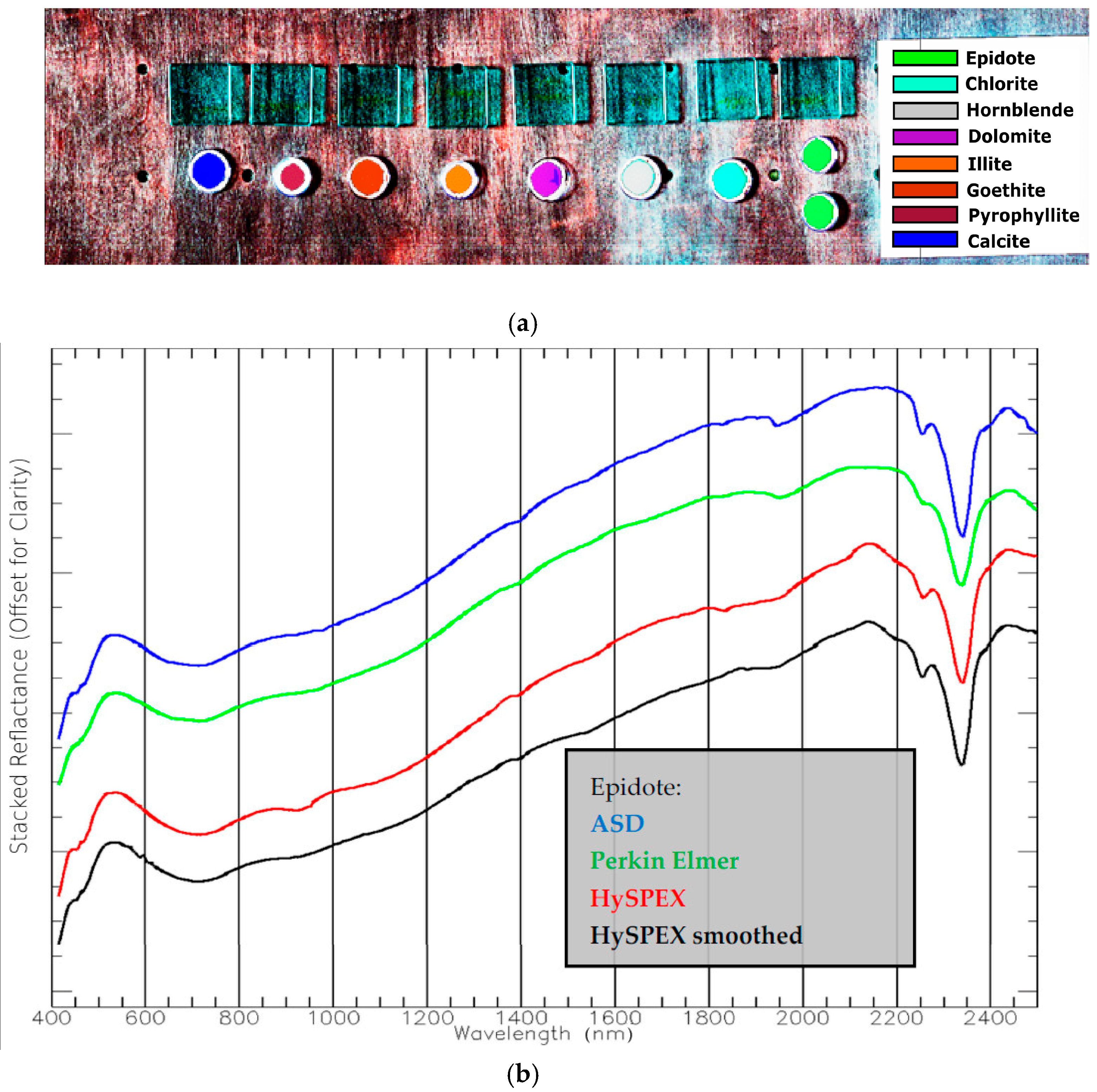
| Type | VNIR 1600 | SWIR 320 m-e |
|---|---|---|
| Spectral Range | 0.4–1.0 μm | 1.0–2.5 μm |
| Spatial Pixels | 1600 | 320 |
| F-number | F2.5 | F2.0 |
| FOV across track | 17° | 13.5° |
| Pixel FOV across/along track | 0.18 mrad/0.36 mrad | 0.75 mrad/0.75 mrad |
| Spectral sampling interval | 3.7 nm | 6 nm |
| Number of bands | 160 | 256 |
| Binning modes | 2, 4, 8 | - |
| Noise floor | 40e | - |
| Peak SNR | >200 | - |
| Dynamic range | 1000 | - |
| Digitization | 12 bit | 14 bit |
| Max frame rate | 135 fps | 100 fps |
| Sensor head weight. | 4.6 kg | 7.5 kg |
| Sensor head dim. (lwh in cm) | 31.5 × 8.4 × 13.8 | 36 × 14 × 15.2 |
| Sensor head pwr. cons. | ~6 W | ~100 W |
| FPA cooling temperature | - | ~195 K |
| Smile (SSI, from Lenhard et al. [4]) | 0.11–0.19 | 0.13 |
| Average keystone (ASI, from Lenhard et al. [4]) | 0.22 | 0.09 |
| Laboratory illumination | Mercury high-pressure lamp 2× 900 W | |
| Type | ASD FieldSpec 4 HiRes | Perkin Elmer Lambda 950 |
|---|---|---|
| Spectral Range | 0.35–2.5 μm | 0.175–3.3 μm |
| Spectral sampling | 1.4 nm @ 350–1000 nm; 1.1 nm @ 1001–2500 nm | UV/VIS 0.05 nm; NIR 0.2 nm |
| Wavelength accuracy | 0.5 nm | UV/VIS 0.08 nm, NIR 0.3 nm |
| Illumination | Halogen | Deuterium (UV),Tungsten-halogen |
| Parameter/Criterion | Angle (μrad) | Scale (#) | Dx (μPixel) | Dy (μPixel) | MSSIM a Priori | MSSIM a Posteri |
|---|---|---|---|---|---|---|
| Mean 3σ | 0.0004 | 1 | 0.004 | 0.002 | 0.78 | 0.97 |
| σ | 0.0006 | 0 | 0.003 | 0.003 | - | - |
| Parameter/Criterion | Spectral Deviation Reference Plate ROI (%) | Spectral Deviation Reference Plate Region Growing (%) | Spectral Variation Reference Plate (%) |
|---|---|---|---|
| Mean 3σ | 0.015 | 1.023 | 2.125 |
| σ | 0.019 | 1.446 | 1.191 |
| Sample/Criterion | Spectral Deviation between ASD and Perkin Elmer (%) | Spectral Deviation between ASD and HySPEX (%) | Spectral Deviation between Perkin Elmer and HySPEX (%) |
|---|---|---|---|
| Epidote | 0.107 | 0.785 | 0.723 |
| Hornblende | 0.097 | 0.375 | 0.477 |
| Chlorite | 0.129 | 0.536 | 0.545 |
| Dolomite | 0.036 | 0.450 | 0.409 |
| Illite | 0.127 | 0.555 | 0.599 |
| Goethite | 0.567 | 2.648 | 5.350 |
| Pyrophyllite | 3.039 | 7.859 | 6.466 |
| Calcite | 25.01 | 12.24 | 31.07 |
| Reference plate | 0.024 | ||
| Mean | 3.64 | 2.83 | 5.71 |
| σ | 8.13 | 4.06 | 9.86 |
| Similarity rank | 2 | 1 | 3 |
| Sample/Criterion | Spectral Deviation between ASD and Perkin Elmer (%) | Spectral Deviation between ASD and HySPEX (%) | Spectral Deviation between Perkin Elmer and HySPEX (%) |
|---|---|---|---|
| Epidote | 7.018 | 5.679 | 1.903 |
| Hornblende | 32.90 | 4.027 | 45.46 |
| Chlorite | 6.406 | 9.923 | 2.255 |
| Dolomite | 4.601 | 1.312 | 6.604 |
| Illite | 19.85 | 4.084 | 34.28 |
| Goethite | 3.408 | 1.121 | 6.238 |
| Pyrophyllite | 4.588 | 11.24 | 11.11 |
| Calcite | 59.18 | 20.30 | 28.20 |
| Reference plate | 1.879 | ||
| Mean | 17.24 | 6.62 | 17.01 |
| σ | 18.52 | 5.91 | 15.56 |
| Similarity rank | 3 | 1 | 2 |
© 2017 by the authors. Licensee MDPI, Basel, Switzerland. This article is an open access article distributed under the terms and conditions of the Creative Commons Attribution (CC BY) license (http://creativecommons.org/licenses/by/4.0/).
Share and Cite
Rogass, C.; Koerting, F.M.; Mielke, C.; Brell, M.; Boesche, N.K.; Bade, M.; Hohmann, C. Translational Imaging Spectroscopy for Proximal Sensing. Sensors 2017, 17, 1857. https://doi.org/10.3390/s17081857
Rogass C, Koerting FM, Mielke C, Brell M, Boesche NK, Bade M, Hohmann C. Translational Imaging Spectroscopy for Proximal Sensing. Sensors. 2017; 17(8):1857. https://doi.org/10.3390/s17081857
Chicago/Turabian StyleRogass, Christian, Friederike M. Koerting, Christian Mielke, Maximilian Brell, Nina K. Boesche, Maria Bade, and Christian Hohmann. 2017. "Translational Imaging Spectroscopy for Proximal Sensing" Sensors 17, no. 8: 1857. https://doi.org/10.3390/s17081857




